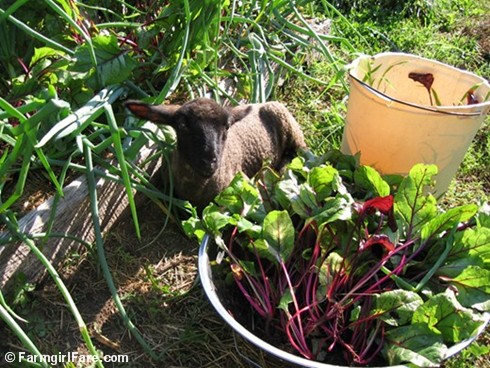
Tempting, Oh So Tempting. . .
Realization Of The Day:
The seed catalogs are already piling up!
Last Thursday I, along with zillions of other Americans, consciously thought about the many things I'm thankful for. When it comes to the garden, I am of course thankful for the glorious, year-round bounty
But I'm even more thankful for something else from the garden, and it isn't even edible: it's the annual ability to completely forget every single disaster and disappointment of the year and start excitedly planning next spring's garden before winter has even begun.
The seed companies know all too well that we gardeners come down with this strange, yet oh-so-convenient affliction. In fact they bank on it. Yes, just moments after the most pitiful tomato harvest in a decade has faded to a hazy memory, the seed catalogs quietly begin to arrive. Next year will be different, we tell ourselves as we begin casually flipping through the first one, eyes glazing over, brain whirring a million miles an hour as we mentally (and effortlessly!) expand the garden to ten times its current size and fill non-existent pantry shelves with 3,000 jars of neatly preserved bounty.
Next year there will be no squash bugs! Next year the blister beetles will spend the summer somewhere else! Next year there will be more tomatoes than I know what to do with! Next year it will be 62 degrees and partly cloudy for 199 days in a row! Next year absolutely everything in the garden will be picture perfect!
Oh, how happy the seed companies will be when they see our largest, most ambitious orders yet!
We can't help it. And really, why should we? For just a few dollars (okay, for some of us it's more than just a few), our seed orders buy us endless winter hours spent happily planting and plotting and harvesting more than we could ever possibly eat. In our dream gardens there exists nothing but pure, unbugbitten success. Sometimes I think December and January are actually the most productive months in my garden.
You may have noticed that these are 2007 seed catalogs in the photo. That's because I'd planned to write this post a year ago. I guess I got carried away
But that's all over now. And there's nothing but a whole new gardening year ahead.
There are certain varieties of seeds I faithfully order year in and year out, and of course I save lots of my own seeds, too. But I always like to grow a certain number of new things each year as well. I'm especially drawn to old and rare heirlooms, which my beloved Baker Creek Heirloom Seeds here in Missouri specializes in. Their 2008 catalog hasn't arrived yet, but the one from my other tried and true supplier, Pinetree Garden Seeds in Maine, has.
A brief look through it already has me eyeing some new offerings, including Cosmonaut Volkov tomatoes ("It's like one of those urban legends--we've been hearing about it for years. . . attractive, crack resistant, uniform fruit provide just the right balance of both sweet and tart flavors."), Midnight Ruffles lettuce ("This new variety from an Oregon breeder is the darkest red lettuce we've seen, almost black in color."), and Welsh onions ("This perennial is used like chives but the flavor is substantially stronger.")
I hope to write about some of my favorite varieties of veggies in the upcoming weeks, along with some of the ones that won't be making second appearances in my garden. In the meantime, what are your favorites and--perhaps more importantly--your least favorites? Or are you buried under a pile of seed catalogs?
Copyright © 2007 FarmgirlFare.com, the award-winning blog where Farmgirl Susan shares stories & photos of her crazy country life on 240 remote acres.
























